This blog site is no longer updated. For the latest news from NASA’s Exploration Ground Systems, visit the website at http://www.nasa.gov/egs.
Author: Anna Heiney
Mobile Launcher Rolls Back to Launch Pad 39B
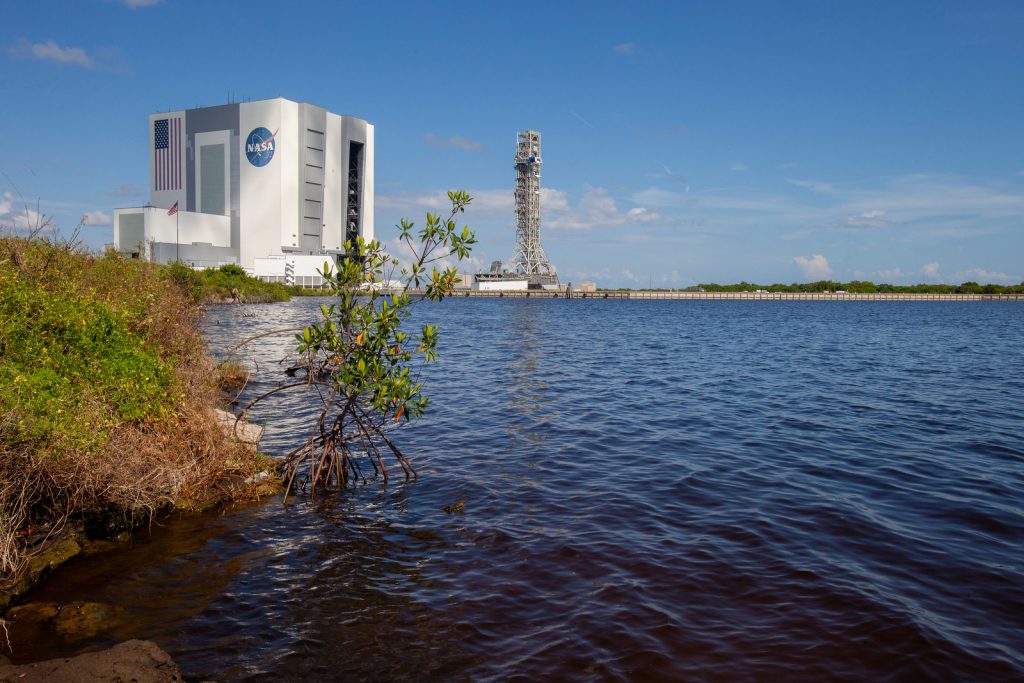 The mobile launcher for NASA’s Artemis missions rolls out of the Vehicle Assembly Building (VAB) at Kennedy Space Center in Florida on Sept. 10, 2019, after spending a week and a half inside due to the approach of Hurricane Dorian. The nearly 400-foot-tall structure was moved from Launch Pad 39B to the VAB for safekeeping on Aug. 30. The storm passed about 70 miles east of the spaceport during the overnight hours Tuesday, Sept. 3, and Wednesday, Sept. 4.
The mobile launcher for NASA’s Artemis missions rolls out of the Vehicle Assembly Building (VAB) at Kennedy Space Center in Florida on Sept. 10, 2019, after spending a week and a half inside due to the approach of Hurricane Dorian. The nearly 400-foot-tall structure was moved from Launch Pad 39B to the VAB for safekeeping on Aug. 30. The storm passed about 70 miles east of the spaceport during the overnight hours Tuesday, Sept. 3, and Wednesday, Sept. 4.
NASA’s Exploration Ground Systems is moving the mobile launcher back to the launch pad, where teams will complete testing and checkout on the launcher in the coming weeks for the Artemis I mission.
Photo credit: NASA/Ben Smegelsky
Core Stage Forward Skirt Umbilical Installed on Mobile Launcher
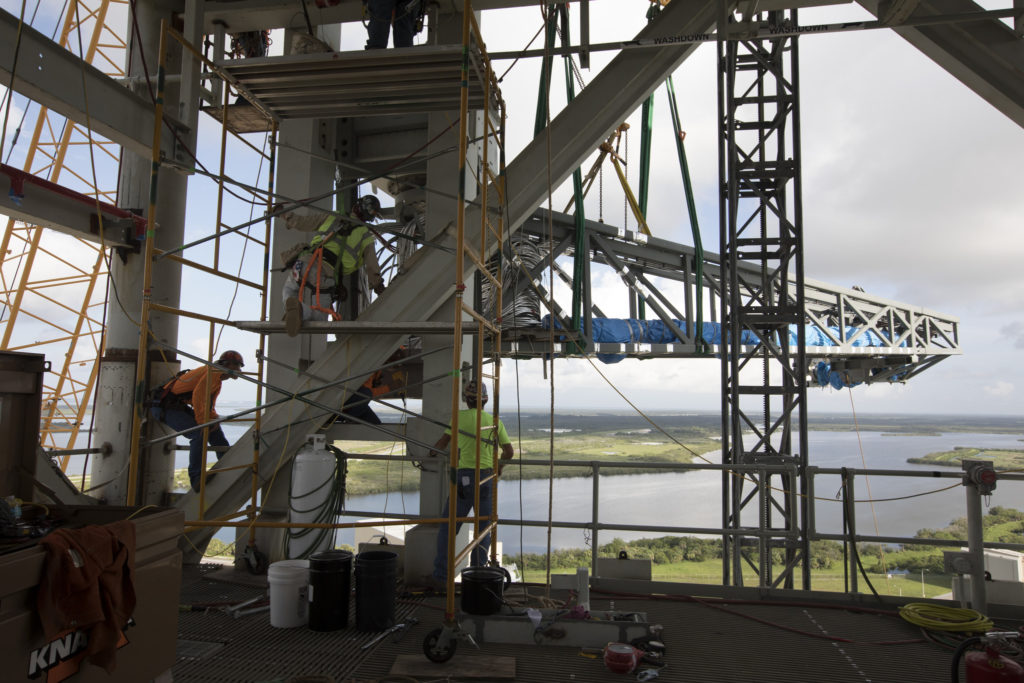
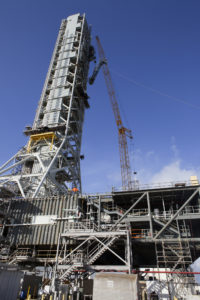 The Core Stage Forward Skirt Umbilical (CSFSU) recently was installed on the tower of the mobile launcher at NASA’s Kennedy Space Center in Florida, to prepare for the first launch of the agency’s Space Launch System (SLS) rocket with the Orion spacecraft atop.
The Core Stage Forward Skirt Umbilical (CSFSU) recently was installed on the tower of the mobile launcher at NASA’s Kennedy Space Center in Florida, to prepare for the first launch of the agency’s Space Launch System (SLS) rocket with the Orion spacecraft atop.
The mobile launcher tower will be equipped with a number of lines, called umbilicals, which will connect to the SLS and Orion spacecraft and provide commodities during processing and preparation for launch of Exploration Mission-1.
Cranes and rigging were used to lift the CSFSU and install it at about the 220-foot-level on the tower. The CSFSU will swing into position to provide connections to the core stage forward skirt of the SLS rocket, and then swing away before launch. Its main purpose is to provide conditioned air and gaseous nitrogen to the SLS core stage forward skirt cavity.
The Ground Systems Development and Operations Program is overseeing installation of the umbilicals on the tower.
Photo credit: NASA/Kim Shiflett
Mobile Launch Umbilicals and Support Fact Sheet
 NASA’s Space Launch System (SLS) rocket will be assembled, processed and transported to the launch pad on a mobile launcher featuring a tower equipped with umbilicals connecting power, communications, fuel and other commodities to the vehicle.
NASA’s Space Launch System (SLS) rocket will be assembled, processed and transported to the launch pad on a mobile launcher featuring a tower equipped with umbilicals connecting power, communications, fuel and other commodities to the vehicle.
For more information on the Mobile Launcher umbilicals and support systems, download the fact sheet at:
https://www.nasa.gov/sites/default/files/atoms/files/ml_umbilicals20160523.pdf
Newly Installed VAB Platform H will Provide Access to SLS Booster Segments
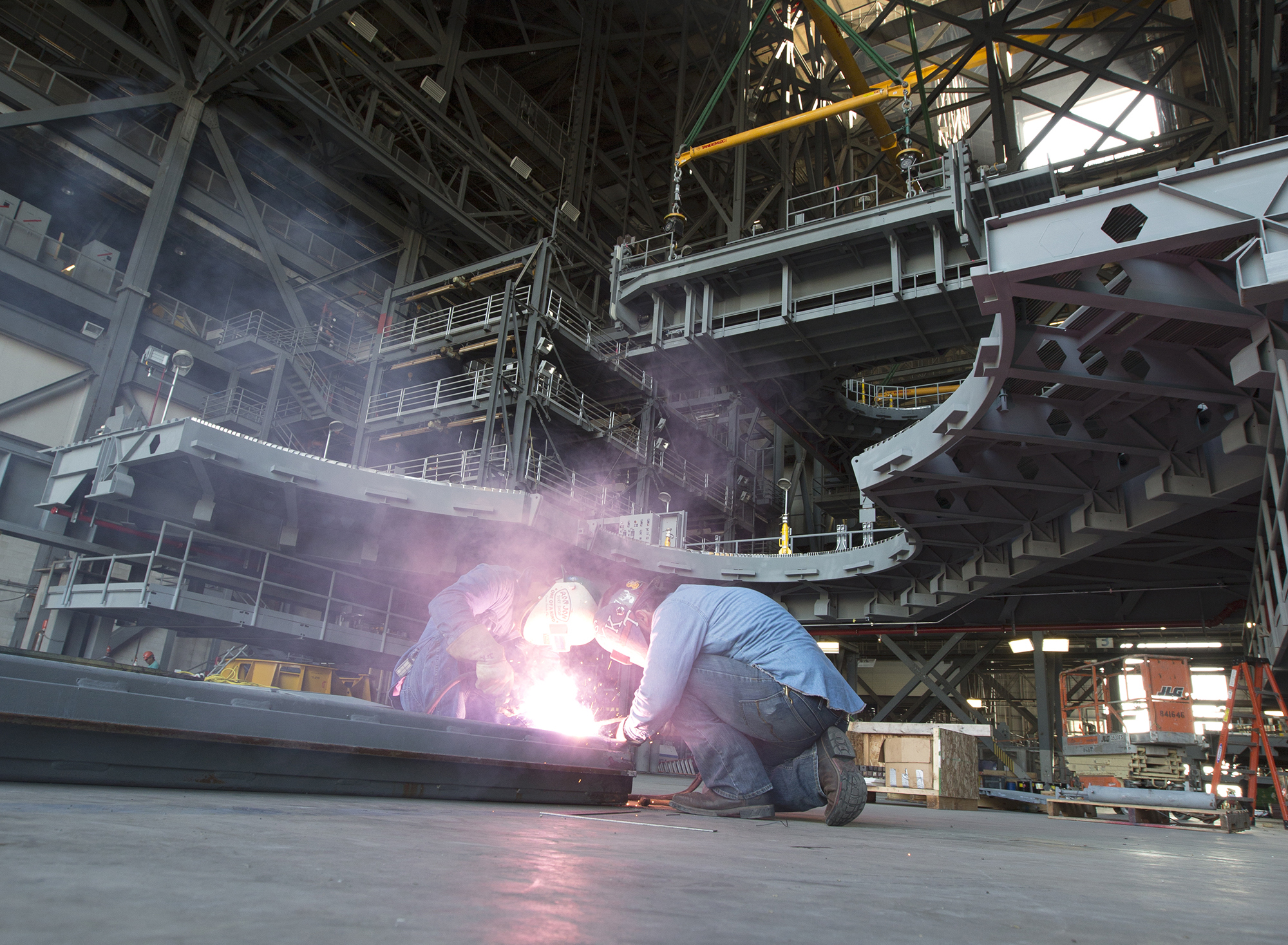 The Vehicle Assembly Building at NASA’s Kennedy Space Center in Florida reached a new level of preparation for the Space Launch System (SLS) rocket and Orion spacecraft. Platform H North was installed Tuesday in the iconic facility’s High Bay 3; its corresponding half, Platform H South, will be lowered into place today.
The Vehicle Assembly Building at NASA’s Kennedy Space Center in Florida reached a new level of preparation for the Space Launch System (SLS) rocket and Orion spacecraft. Platform H North was installed Tuesday in the iconic facility’s High Bay 3; its corresponding half, Platform H South, will be lowered into place today.
Platform H will allow technicians and engineers to reach the booster for mating of the forward/center segment to the center/center segment, as well as cable routing and booster closeouts.
It is the third of 10 levels of work platforms that will surround and provide access to the SLS rocket and Orion spacecraft for Exploration Mission 1. The Ground Systems Development and Operations Program is overseeing upgrades and modifications to VAB High Bay 3, including installation of the new work platforms, to prepare for NASA’s journey to Mars.
Photo credit: NASA/Ben Smegelsky
Fact Sheet Highlights New VAB Work Platforms for SLS
 New work platforms being installed in Kennedy Space Center’s Vehicle Assembly Building will provide access for testing and processing NASA’s Space Launch System (SLS) rocket. The rocket will launch an uncrewed Orion spacecraft on Exploration Mission 1 (EM-1) from Launch Pad 39B at the agency’s Kennedy Space Center in Florida. SLS will be capable of launching crewed missions to deep space destinations, including the journey to Mars.
New work platforms being installed in Kennedy Space Center’s Vehicle Assembly Building will provide access for testing and processing NASA’s Space Launch System (SLS) rocket. The rocket will launch an uncrewed Orion spacecraft on Exploration Mission 1 (EM-1) from Launch Pad 39B at the agency’s Kennedy Space Center in Florida. SLS will be capable of launching crewed missions to deep space destinations, including the journey to Mars.
A new fact sheet provides details about these giant steel platforms and how they will accommodate the most powerful rocket in the world. Read more at
https://www.nasa.gov/sites/default/files/atoms/files/vab_platforms_20160524.pdf
NASCAR Driver Carl Edwards Behind the Wheel at Kennedy
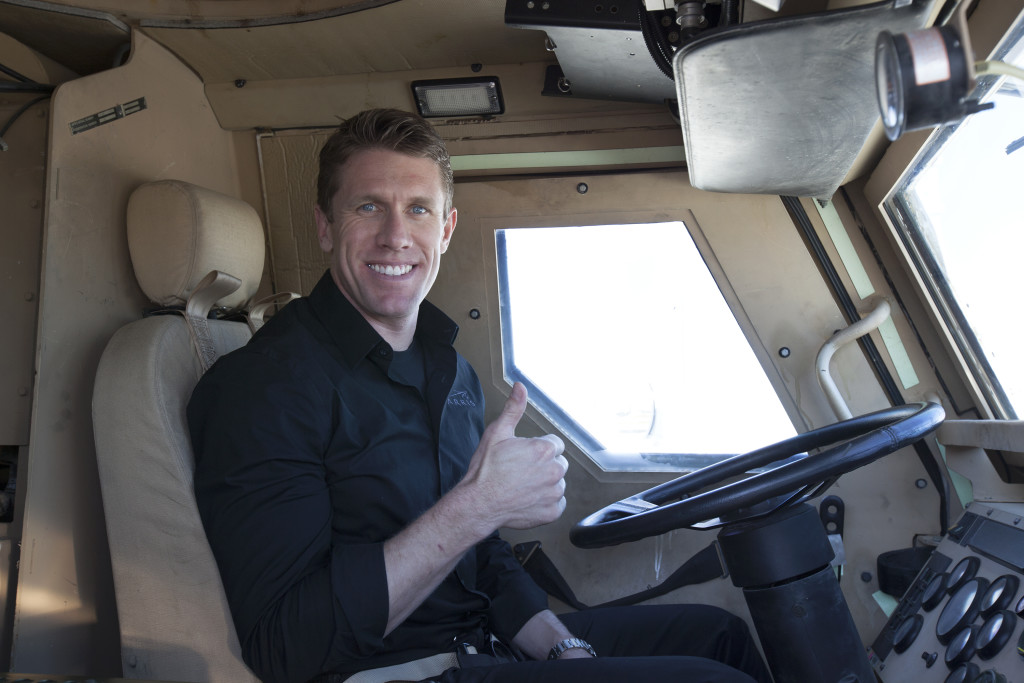
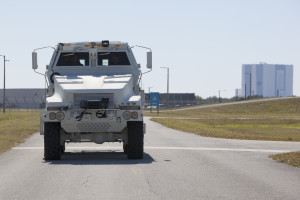
NASCAR driver Carl Edwards visited NASA’s Kennedy Space Center in Florida and slid behind the wheel of an entirely different kind of car: a Mine-resistant, Ambush-protected vehicle better known as MRAP.
The agency’s Ground Systems Development and Operations Program selected the MRAP to serve as an upgraded version of an armored escape vehicle that would allow astronauts to evacuate the launch pad in the event of an emergency.
While at Kennedy, Edwards stopped by the massive Vehicle Assembly Building and Launch Pad 39B. Both facilities are being prepared to support assembly and launch of NASA’s next-generation heavy-lift rocket, the Space Launch System.
Edwards toured the spaceport ahead of Sunday’s Daytona 500 race, in which he is driving the No. 19 car for Joe Gibbs Racing.
